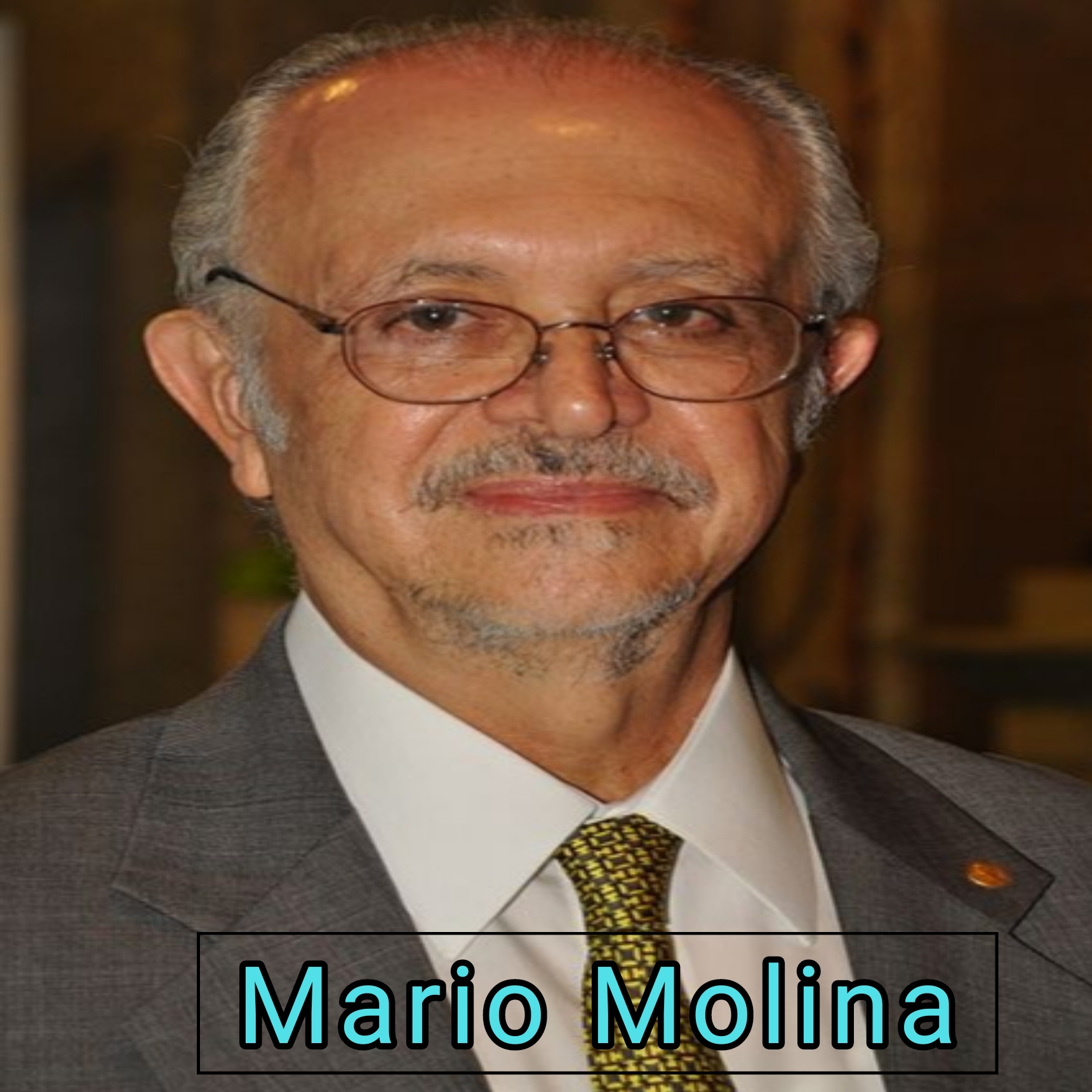Mario Molina Biography ?
Born : Mario Jose Molina Henriquez 19 March 1943 Mexico City, Mexico
Died : 7 October 2020 (aged 77) Mexico City, Mexico
Education : National Autonomous University of Mexico (BS), University of Freiburg (MS), University of California, Berkeley (PhD)
Spouses : Luisa Tan (m. 1973; div. 2005) Guadalupe Alvarez (m. 2006)
Awards : Tyler Prize for Environmental Achievement (1983) , Newcomb Cleveland Prize (1987), NASA Exceptional Scientific Achievement Medal (1989), Nobel Prize in Chemistry (1995), Willard Gibbs Award(1998), UN Environment Programme Sasakawa Environment Prize (1999), Heinz Award in the Environment (2003), Volvo Environment Prize (2004), Presidential Medal of Freedom (2013) Scientific career
Fields : Chemistry
Institutions : University of California, San Diego Massachusetts Institute of Technology, Jet Propulsion Laboratory, California Institute of Technology, University of California, Irvine
National Autonomous University of Mexico
Thesis : Vibrational Populations Through Chemical Laser
Studies : Theoretical and Experimental Extensions of the Equal-gain Technique (1972)Doctoral advisorGeorge C. Pimentel
Doctoral : students Renyi Zhang
In 1974, Mario Molina and Sherwood Rowland demonstrated that CFC gases, freons, have a damaging effect on ozone in the atmosphere. Freons had many uses, including propellants in spray cans and refrigerants in refrigerators. By limiting the use of freons, the depletion of the ozone layer has been slowed.
Mario Jose Molina Henriquez (19 March 1943 –7 October 2020) known as Mario Molina, was a Mexican chemist. He played a pivotal role in the discovery of the Antarctic ozone hole, and was a co-recipient of the 1995 Nobel Prize in Chemistry for his role in discovering the threat to the Earth’s ozone layer from chlorofluorocarbon (CFC) gases.
He was the first Mexican-born scientist to receive a Nobel Prize in Chemistry and the third Mexican born person to receive the Nobel award.
In his career, Molina held research and teaching positions at University of California, Irvine, California Institute of Technology, Massachusetts Institute of Technology, University of California, San Diego, and the Center for Atmospheric Sciences at the Scripps Institution of Oceanography.
Molina was also Director of the Mario Molina Center for Energy and Environment in Mexico City. Molina was a climate policy advisor to the President of Mexico, Enrique Pena Nieto. On 7 October 2020, the National Autonomous University of Mexico announced that Molina had died of a heart attack.
In Mexico City, 1943, on March 19, Mario Molina was born to Roberto Molina Pasquel, and Leonor Henríquez. His father was a lawyer and diplomat who served as an ambassador to Ethiopia, Australia and the Philippines.
Morning His mother was a family manager. With considerably different interests than his parents, Mario Molina went on to make one of the biggest discoveries in environmental science.
Mario Molina attended both elementary and primary school in Mexico. However, before even attending high school, Mario Molina had developed a deep interest in chemistry.
As a child he converted a bathroom in his home, to his own little laboratory, using toy microscopes and chemistry sets. Ester Molina, Mario’s aunt, and an already established chemist, nurtured his interests and aided him in completing more complex chemistry experiments.
At this time, Mario knew he wanted to pursue a career in chemistry, and at the age of 11, he was sent to a boarding school in Switzerland at Institut auf dem Rosenberg in Switzerland,
where he learnt to speak German. Before this, Mario had initially wanted to become a professional violinist, but his love for chemistry triumphed over that interest Molina’s early career consisted of research at various academic institutions.
Molina went on to earn his bachelor’s degree in chemical engineering at the National Autonomous University of Mexico (UNAM) in 1965. Following this, Molina studied polymerization kinetics at the Albert Ludwig University of Freiburg, West Germany for two years. Finally, he was accepted for graduate study at the University of California, Berkeley.
After earning his doctorate he made his way to UC Irvine. He then returned to Mexico where he kickstarted the first chemical engineering program at his alma mater. This was only the beginning of his chemistry endeavors.




